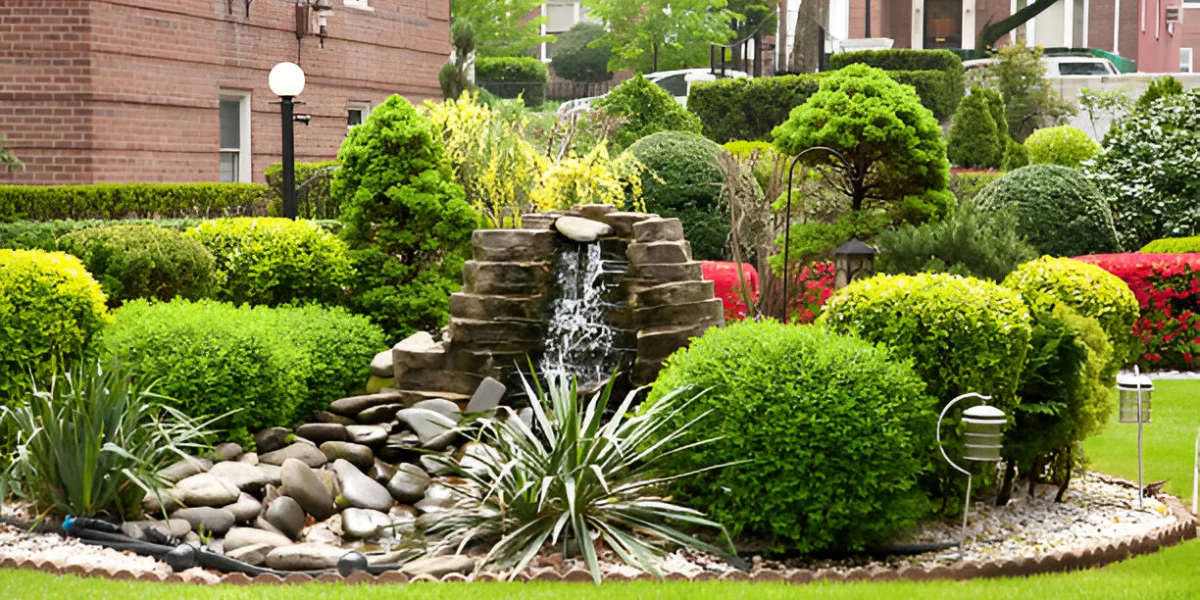
Drought-Resistant Gardening: Top Plants and Tips for UK Gardens
Droughts are quite common in the UK as climate change introduces erratic weather patterns. This means that gardeners nowadays are under great pressure to keep their plants alive while employing water conservation approaches.
The good news is that by selecting the correct drought-resistant plants and using clever gardening methods, you can design a lovely low-maintenance landscape that can handle dry spells.
This article will help you embrace drought-resistant horticulture and maximise your outdoor space even under limited water availability.
Table of Contents
ToggleUnderstanding Drought-Resistant Gardening
Drought-resistant gardening is a whole inclusive method that combines plant choice with water-saving techniques.
The secret is to select plants that flourish with little water and while employing gardening methods that retain soil moisture. Deep root systems, water-storing leaves, and resilience against dry conditions define many plants.
Including drought-resistant horticulture into your landscape not only helps you save water, but also lessens maintenance, saves time, and provides a sustainable habitat for nearby species.
Let’s explore some excellent drought-resistant plants for UK gardens and advice to help you design your water-wise oasis.
Top Drought-Resistant Plants for UK Gardens
Certain species can surprisingly withstand periods of dryness, although the UK is anything but dry for the most of the year. However, with warmer summers due to global warming, drought-resistant plants can be a nice addition. These are some of the finest choices you could have in your garden:
1. Lavender (Lavandula)
Any garden resistant to drought should use lavender as a classic choice. Its aromatic leaves and gorgeous purple blossoms make it popular for paths, borders, and containers.
Lavender requires minimal water once established and it thrives in well-drained soil and full sun. It also attracts pollinators such as butterflies and bees, giving your garden life.
Though avoid cutting into old wood, gently prune lavender after flowering to maintain its neatness and encourage fresh growth.
2. Sedum
Perfect for drought circumstances, sedums—also known as stonecrops—are remarkably flexible low-growing succulents that store water in their fleshy leaves.
From ground covers to erect types, they come in a range of colours and patterns and are great for rock gardens, borders, or even green roofs.
Plant sedums in well-drained fully sun-lit soil. Prune deadheading to remove wasted blossoms.
3. Rosemary
Apart from being a common culinary herb, rosemary is a strong shrub ideal for dry gardening. Originally from the Mediterranean, this plant loves full sun and can flourish on sandy weak soils.
It’s a fantastic addition to borders, herb gardens, or even as a low hedge with its scented needles and tiny blue blooms.
Rosemary’s form and dense foliage is encouraged by sporadic pruning. It also complements other Mediterranean herbs like sage and thyme really brilliantly.
4. Echinacea
Every garden would benefit from this vivid long-blooming perennial, sometimes known as coneflower.
Once established, echinacea is particularly appealing to pollinators and drought-tolerant due in part to its prickly centres and daisy-like blossoms. For cottage gardens, varied borders, or areas sympathetic to wildlife, this is a wonderful choice.
Put echinacea in a sunny area with well-drained ground. Deadhead spent blooms to inspire more, then leave some seed heads in October for the birds.
5. Autumn Joy’s Sedum
One such variation of sedum, “Autumn Joy,” is a standout in any drought-resistant garden.
It is well-known for its tall straight stems covered in clusters of pink flowers that age to a rich copper hue. This plant is remarkably robust as it survives with minimal water and bad soil.
For optimum flower colour and lifetime, plant in full sun. Once established, you just need to trim down the dead stem.
6. Agapanthus
With its strikingly blue or white globe-like blossoms, agapanthus gives UK gardens a bit of the exotic. Ideal for borders, containers, or as a statement plant, this drought-tolerant perennial grows in full sun and well-drained ground.
Agapanthus performs well in pots since it prefers to be root-bound. In winter, particularly in colder areas, mulch helps protect its roots.
7. Thymus
This plant is low-growing and ideal for ground cover, rock gardens, or bordering paths. Thyme requires little water and care and iit thrives on dry sandy soils with full sun.
Plant thyme in well-drained soil and cut back after flowering to maintain its compactness and promote fresh growth.
8. Oregano
This is another Mediterranean herb that is quite suited for drought-resistant landscaping. It yields little pink blossoms and aromatic leaves that are fit for cooking. It is considered the perfect addition to herb gardens, borders, or containers. It is also a robust plant that draws pollinators in.
Sow oregano in well-drained full sun soil. Prune in late summer to promote a bushed dense plant.
Tips for Creating a Drought-Resistant Garden
Although choosing the right type of plants is crucial, there are more ideas that can help you maintain a beautiful garden with the minimal amount of water:
1. Boost Soil Using Organic Matter
Although drought-resistant plants depend on well-drained soil, it should also retain adequate moisture to maintain hydration of roots.
Including organic matter—such as well-rotted manure or compost—improves soil structure, promotes water retention, and raises fertility.
2. Mulch to Capture Moisture
Among the easiest approaches to cut water evaporation and control weeds is mulching. Add a thick layer of mulch made from organic materials as compost, straw, or bark around your plants. This layer of protection helps preserve constant moisture levels, lowers the need for regular watering, and keeps the ground cool.
3. Water Conscientiously and Deeply
Even drought-tolerant plants require water during early establishment.
To help roots go further down into the ground, water deeply but less often. Watering should take place early in the morning or late in the evening since this lowers evaporation and guarantees that water can reach the roots instead of being wasted to the sun.
To minimise waste and concentrate moisture where it is most needed, think about putting in a drip irrigation system to send water straight to plant bases.
4. Combine Plants with Similar Needs
Planting greens that share the same water, light, and soil needs helps you run your garden more successfully.
Known as zoning, this approach lets you preserve low-water plants in drier zones and focus watering efforts on regions most in need.
5. Select Native Plants
Native drough-resistant plants are naturally more evolved to fit the local temperature.
Since native species are already fit for your surroundings, including them into your garden will help you cut your dependence on water.
6. Minimise Lawn Areas
Usually needing more water than most garden plants, lawns are thirsty.
Think about cutting the size of your grass or substituting gravel, asphalt, or drought-tolerant ground coverings. If you keep some grass, use a drought-tolerant grass mix or think about letting it go brown during dry spells. Normally, it will rebound once the rain comes back.
7. Install Systems for Rainwater Harvesting
One great approach to irrigate your garden without using a main water supply is rainwater collecting.
Install rain barrels or water butts to gather runoff from your roof, then make use of this free resource to keep your garden moist during dry spells.
Conclusion
Choosing the correct plants and using water-saving methods will help you design a strong garden that thrives with little water.
From fragrant herbs to vivid perennials, there are lots of choices to cover your space with colour and life while controlling your water expenditure.
So grab your trowel, choose your plants, and turn your yard into a green paradise that will flourish even when during the driest of periods.





